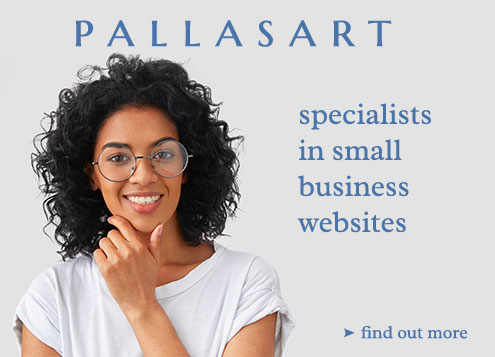Trends in Logo Design and How to use Logos in Websites archived web marketing tips and articles from the past
Trends in Logo Design and How to use Logos in Websites
What is the purpose of a logo?
A logo is a visual representation of your business. It reflects your company’s name, message and values. It also reflects your business style and that of your industry. Over time, your logo should be immediately recognizable to your customers. Your logo’s typeface (font), color and graphic design should reinforce your company’s brand identity.
Types of logo design.
There are three basic types of logo designs. They are text (typeface/font), symbol (graphic image/icon), and text and symbol. A few examples of each are listed below:
Text logo: FedEx, Dell, Google, Coca Cola, Ford, Walgreens, Toys R Us, Xerox
Symbol logo: Apple, Microsoft, Nike, Playboy, Shell, Red Cross, Chevrolet
Text and Symbol logo: Adidas, AT&T, Chevron, Sprint, IBM
Some companies have created successful logos by incorporating a graphic design using the first letter or letters of their business name. Examples: Hewlett Packard (hp), American Airlines (AA) Volks Wagon (VW), Honda (H) and Rolls Royce (RR).
Other companies have incorporated an illustration that reflects its name or is a "play on words" of its name. Examples: Apple (apple), Target (bull’s eye), Taco Bell (bell), Wells Fargo (stagecoach), Arm & Hammer (arm and hammer) and Chevron (chevrons)
None of these logo types is better than the other. You must decide which style works best for you and your company.
Fonts: How to choose a font for your logo.
First, determine how your logo will be used. Will it be used on billboards and signs? Does it need to be recognizable from a distance? Will it be used on products, print materials and/or a web site? Where and how your logo will be used will help you decide the best font or combination of fonts to choose. (See our article: How to Select the Right Fonts for your Website).
Does your company provide a product or service? If so, select a font for your logo that reflects either the style of service you provide or what you want the customer to experience while using your product or service.
What is the message you want your logo to convey? Is it one of elegance and refinement, attention to detail and quality craftsmanship, speed and efficiency or hard work and dependability? Do you want your company to be perceived as trustworthy, family-friendly or cutting-edge? Your choice of typeface can say a lot about your values and what your customers can expect from your business. Once you’ve chosen a font for your logo, never use this font for any purpose other than your logo. This typeface is now part of your brand identity.
Still not sure which font to use? Then look at the logos of your competitors, particularly leaders in your industry. Of these, determine which style logos appeal to you the most and why. But be careful not to use the same or similar fonts of your competitors when designing your logo. This will help you establish your own, unique identity and avoid any potential copyright infringement.
Graphics: To use or not to use them.
Having a symbol or icon in your logo is a personal choice. If you feel your company name and brand identity would benefit from the additional use of a graphic, then select a symbol that best reflects or complements your company name, message, style, service and/or products. When choosing a graphic, make sure it also complements your logo typeface and is appropriate for your color palette.
Your logo graphic could be something simple and non-representational, such as a series of lines, circles or geometric patterns. It might be random dots or swirls of color. If your company name does not imply your service or product, you might consider a graphic that is more representational of your industry, such as a leaf for a lawn service or an elegant tray for a catering business. If this concept seems dated, then give your logo a more contemporary look by featuring a graphic based on a fragment of the image.
The next step is to analyze the logos of your competitors. Pick the logos you like best, decide why you like them, then design something that appeals to you in the same way. Also, take a closer look at your font and see if any of your images could be incorporated into the letters of your name. Look for dotted i's, crossed t’s and h's or complete letter replacements. These are easy ways to combine graphics and fonts while still keeping your logo simple.
Color: With so many choices, where do I begin?
If your company already has a colored logo, then Pallasart will work with you to incorporate your logo and color palette into your new web site. If not, before selecting colors for your logo, we invite you to read our article: Making Effective Use of Color in your Website. Be sure to make a note of colors commonly used in your industry's logos and also at the colors of the products themselves.
Keep in mind that the most successful color combinations on the web will also be the best combinations for your logo. The more you know about color palettes, complementary colors and color saturation, the more satisfied you will be with your logo color choices.
Want a little more help? Ask yourself the following 6 questions before selecting colors for your new logo:
- Will the logo look good in black and white or grayscale?
- Do I have the printing budget for more than a two-color logo? (Note: black is one color)
- Will this color look good on buildings, displays, outdoor signs and uniforms?
- Is the color a standard print or web browser color?
- Does my logo need color to make sense to the customer?
- Will I, my employees and customers grow tired of this color?
How important is a logo?
Your company's logo is the third most important element in developing your brand identity, the first being your name and the second your message. Of course, all three have no value it they aren’t backed by quality products and services.
Your logo is only one piece of your brand identity and it will take time to design. But don't put so much emphasis on your logo design that you bring your business to a halt or delay the creation of your website. Many companies have missed business opportunities because they spent too much time trying to come up with the "perfect" logo. This time could have been spent building a new online presence and customer base.
A logo is not a prequisite for designing a website or launching an online business. In building your site, Pallasart will work closely with you to identify your style, formulate your message, and select images and colors that best reflect your company goals and values. During this process, you will be able to explore a variety of fonts, graphics and color combinations. Having a web design team that also designs logos is an added benefit of working with Pallasart Web Design.
Some tips for designing a logo:
Don’t use a logo or font that is similar to that of your competition or is trademarked or copyrighted.
Don't use free clip art. Someone else might use it, too, and your logo won’t be unique.
Don’t choose too many colors or non-complementary colors.
Don’t make your logo too busy or trendy. It may appear outdated in a few years.
Don’t spend so much time worrying about a logo that you don’t get your website launched.
Do use a simple font and design that can be resized for different purposes.
Do choose a design that looks good in grayscale, particularly if you have lots of printed materials.
Do select colors that are common in your industry.
Do choose colors that reflect your company’s style and message.
Do keep budget in mind when selecting which and how many colors to use.
here are some
archived web
marketing tips
and articles
from the
past
- 10 Top Design Tips - essential ideas to make your site a success
- How to Select the Right Fonts for your Website
- Trends in Logo Design and How to use Logos in Websites
- Pallasart's Guide to Search Engine Optimization
- Pallasart's ABCs - Dictionary of Technical Terms
- Walt's Overview on Internet Video
- Making Effective use of Color in Websites
- Why a web page may look different on different computers
- The Austin Advantage
- Using Social Networking Sites Like Facebook and Twitter to Promote Your Business
- Royalty-Free Stock Photography Sources














